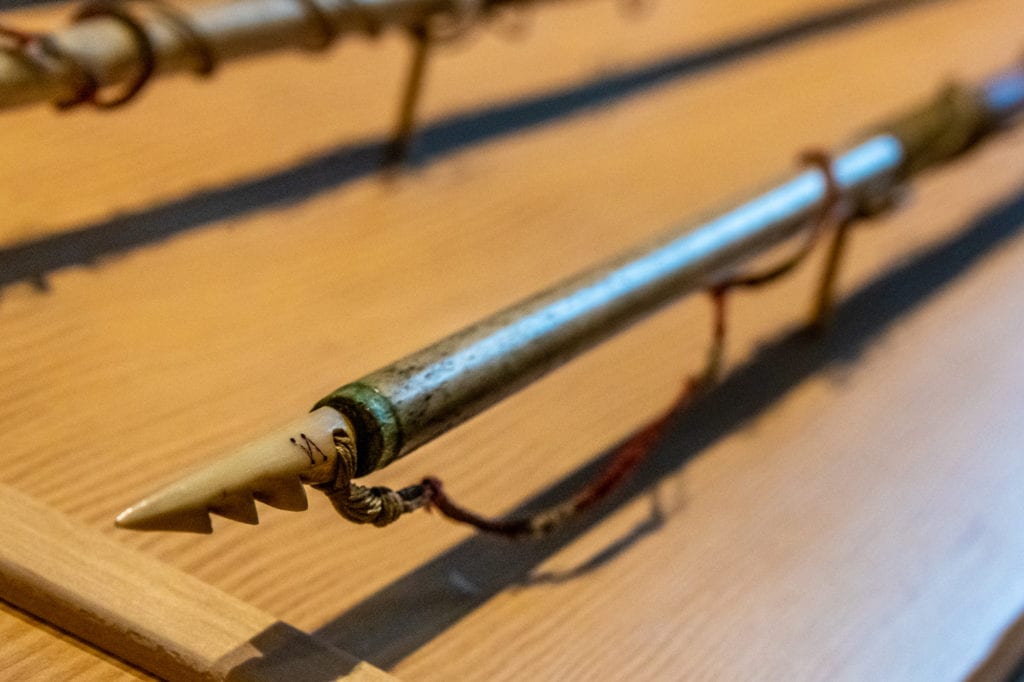
As the staff at the Cordova Historical Museum work to create the new exhibitions in the Cordova Center space, sometimes historic photos lead us down a path of new ideas.
Curator Denis Keogh recently had that experience as he detailed portions of our Native Culture exhibit working on the three-hole baidarka and a smaller baidarka model. In choosing an image to place behind the model Denis found a photo that mirrored the three Native hunters in the model. In the photograph, one hunter has a bow and arrow poised to strike.
Conducting some research about tools used by the Sugpiaq in Prince William Sound, Denis discovered a Prince William Sound bow-and-arrow/harpoon in the University of Alaska Museum of the North collection.
The Cordova Museum requested a short-term loan from UAF to examine the back bow and sea otter bone arrow/harpoon. After completing the necessary paperwork and detailing the shipping of the important object, it arrived in Cordova.
During the time the Cordova Museum could study the object, Keogh, a talented woodworker himself, created a replica for use in the Cordova Museum’s exhibits.
The original back bow is wood wrapped in sinew. The two sea otter arrows were constructed of sea otter bone attached to wood with a sinew wrap where a brass arrow point is tied. Feathers are at the top where the fletching inserts into the wrapped wooden shaft. It is believed to have been created and used in Prince William Sound circa 1870.
The Cordova Historical Society and Museum are grateful to the University of Alaska’s Museum of the North, especially Angela Linn for assistance with this project.





